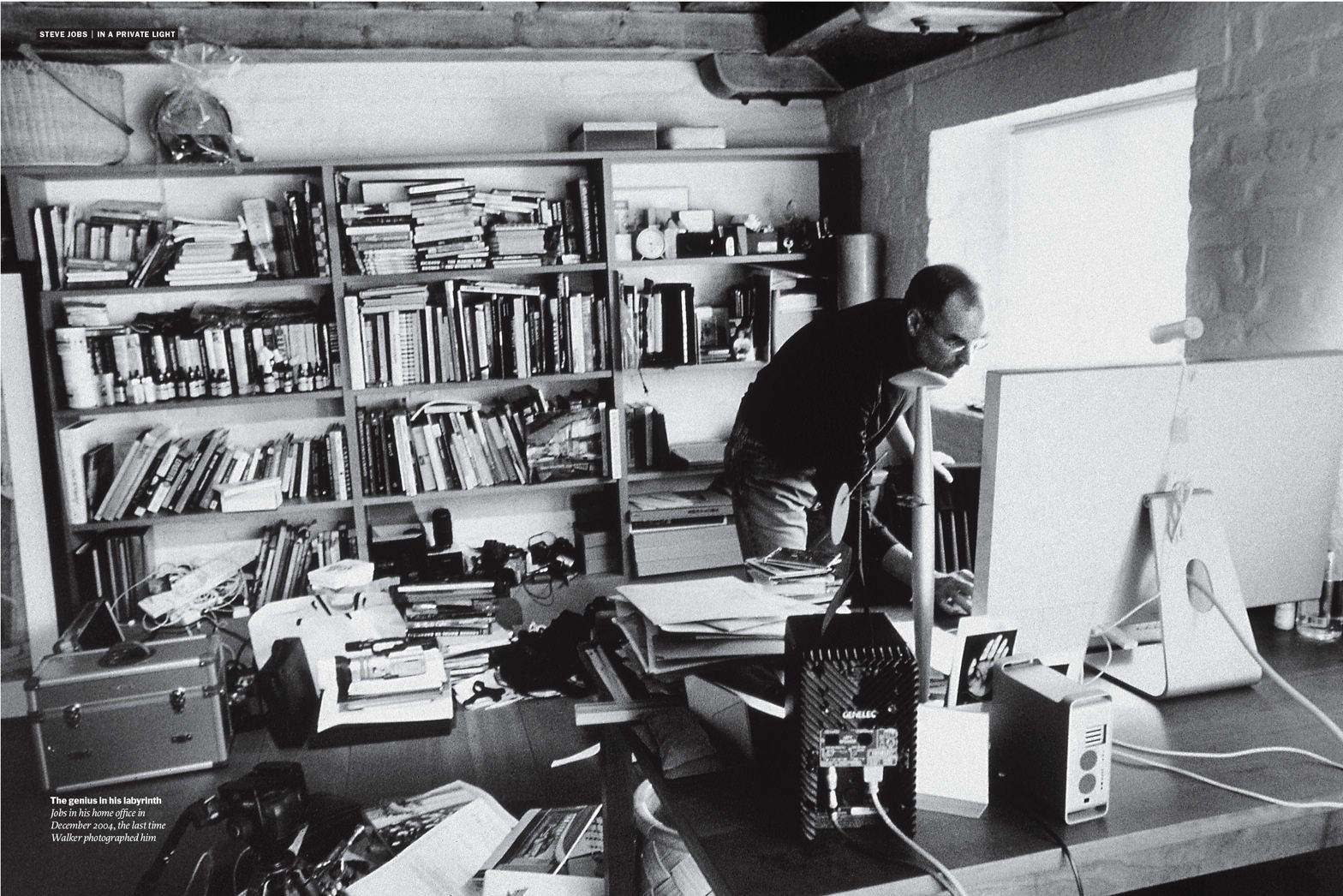Start Work from Home Jobs | Start Working
Start working from home now | Start NOW!
Start a career change | Browse Jobs
What Happened to Steve Jobs’ Office at Apple? When Apple co-founder and former CEO Steve Jobs passed away in 2011, the company was left with a big decision to make about what to do with his office. According to Jobs’ biographer Walter Isaacson, Jobs had a very specific vision for his office: “No one is allowed in except me. When I die, they can have my body.” So what happened to Steve Jobs’ office at Apple?
The short answer is that it’s still there, and it hasn’t been touched since Jobs died. According to those who have seen it, the office is exactly as he left it, right down to the papers on his desk and the half-eaten apple on his nightstand.
Click Here to Start a Career at Apple
When Steve Jobs returned to Apple in 1997, he made some major changes to the company. One of those changes was getting rid of his office. Jobs believed that having an office would make him seem more important than other employees and it would give him a place to hide away from the rest of the company.
So he got rid of his office and started working out of a small cubicle instead. This change sent a strong message to everyone at Apple that everyone was equal and that no one was above anyone else. Jobs wanted everyone to feel like they were part of a team and that they all had a role to play in making Apple successful.
Although Jobs is no longer with us, his legacy continues on at Apple. The company is still run by many of the same people who were there during Jobs’ time, and they continue to uphold the values that he instilled in them.
Why Steve Jobs Was Fired From Apple
Why Did Steve Jobs Stop Working at Apple?
On August 24, 2011, Steve Jobs resigned as CEO of Apple, the company he co-founded in 1976. In a letter to the Board of Directors, Jobs said he could no longer “meet [his] duties and expectations” as CEO. Jobs had been on medical leave since January 17 of that year, due to his battle with pancreatic cancer.
Tim Cook, who had been serving as Apple’s Chief Operating Officer in Jobs’ absence, was named as his successor. Jobs’ resignation came as a surprise to many because he had seemed to be doing well after his cancer diagnosis. He even made a few public appearances during his leave of absence, most notably at the launch of the iPad 2 in March 2011.
However, it is believed that Jobs’ health had taken a turn for the worse in the months leading up to his resignation. In June 2011, it was reported that Jobs had lost significant weight and was having difficulty speaking. Just two weeks before resigning, Jobs made an appearance at Apple’s Worldwide Developers Conference (WWDC), but did not give any keynote address or participate in any interviews—something that would have been very unusual for him.
It is thought that Steve Jobs decided to step down as CEO of Apple because he knew his health was failing and wanted to ensure that the company would be in good hands after he was gone. While we can only speculate about what went through Jobs’ mind during this difficult time, there is no doubt that he loved Apple and wanted nothing but the best for it—even if that meant giving up his own leadership role.
What Happened to the Old Apple Campus?
When Apple co-founder Steve Jobs died in 2011, the company he left behind was worth an estimated $350 billion. Jobs was a notoriously demanding CEO, and his perfectionism helped make Apple the most valuable company in the world. But after his death, Apple began to lose its luster.
In 2013, the company announced that it was shutting down its iconic iPod division. The following year, it unveiled a new iPhone that many customers found disappointing. And in 2016, Apple released the iPhone 7—a phone that lacked a headphone jack and came with an uninspired design.
The same year, Apple also faced criticism for its decision to remove the headphone jack from the iPhone 7. Many customers were angry about the move, and some even started a petition calling on Apple to bring back the headphone jack. The petition didn’t persuade Apple to change its mind, and when sales of the iPhone 7 failed to meet expectations, many analysts blamed the lack of a headphone jack.
In 2017, things got worse for Apple when it was revealed that the company had been secretly slowing down older iPhones with software updates. This caused many customers to lose faith in Apple’s products and led to multiple lawsuits against the company. Finally, in 2018,Apple admitted that it had been deliberately slowing down older iPhones and apologized for doing so.
Does Steve Jobs Still Have an Office?
When Steve Jobs returned to Apple in 1997, he did not have an office. He instead had a cubicle located in a communal area with the other employees. In 2000, when Jobs became the CEO of Apple, he was given an office on the executive floor.
This office had a large glass door with his name on it. However, after Jobs was diagnosed with cancer in 2003, he began working from home more often. In 2004, he officially moved his office to his home in Palo Alto, California.
He continued to work from this home office until his death in 2011.
Was Steve Jobs Removed from Apple?
No, Steve Jobs was not removed from Apple. He resigned as CEO on August 24, 2011 due to health concerns, and Tim Cook took over as CEO. Jobs remained Chairman of the Board until his death on October 5, 2011.
Click Here to Start a Career at Apple

Credit: www.thetimes.co.uk
Why Did Steve Jobs Return to Apple | What Happened to Steve Jobs’ Office at Apple?
In 1996, Apple was in trouble. The company had lost its way after the death of its founder, Steve Jobs. Its products were outdated and it was hemorrhaging money.
Desperate to turn things around, the board of directors turned to Jobs, who had left the company several years earlier. They offered him a deal: come back and run Apple, and we’ll give you a small percentage of the company. Jobs agreed, and he set about revamping Apple’s product line.
He also instituted some much-needed changes to the company’s culture. Within a few years, Apple was once again profitable and growing rapidly. Jobs had saved the company he co-founded.
So why did Jobs come back? He could have easily stayed retired or taken another CEO job elsewhere. But something about Apple must have still been special to him.
Perhaps it was simply the challenge of turning around a struggling business. Or maybe he realized that Apple couldn’t survive without him at the helm. Whatever his reasons, we’re all glad he came back!
When Did Steve Jobs Come Back to Apple
It was 1997 when Steve Jobs returned to Apple as the company’s CEO. He had been ousted from the company 12 years earlier, in 1985. Jobs returned to a company that was on the brink of bankruptcy; within six months he had turned things around and Apple was once again profitable.
Under Jobs’ leadership, Apple released groundbreaking products like the iMac, iPod, iPhone, and iPad. He also oversaw the development of iTunes and the App Store, making it easy for users to buy and download music, movies, apps, and more. Jobs transformed Apple into one of the most successful companies in the world; when he died in 2011, Apple was worth $350 billion.
What Did Steve Jobs Do After Leaving Apple
In 1985, after a long and public battle with then Apple CEO John Sculley, Steve Jobs was forced to resign from the company he co-founded. He went on to found several other companies, including NeXT Computer, and Pixar Animation Studios. In 1996, Apple bought NeXT for $429 million, and Jobs returned to the company he started in his garage.
He remained CEO of Apple until his death in 2011.
Click Here to Start a Career at Apple
Conclusion of What Happened to Steve Jobs’ Office at Apple?
When Steve Jobs returned to Apple in 1997, he made some major changes to the company’s corporate culture. One of those changes was getting rid of his own office. Jobs believed that having an office would make him seem unapproachable and aloof, so he had it dismantled and replaced with a meeting table.
Jobs’ decision to get rid of his office was just one example of his focus on making Apple a more collaborative and open environment. He also instituted weekly all-hands meetings where anyone could voice their opinion on any topic, regardless of rank or position. And he famously had an open-door policy, encouraging employees to come to him with their ideas and concerns.
These policies helped create the kind of close-knit culture that Apple is known for today. And while Jobs is no longer with us, his legacy continues to shape the company he co-founded.




